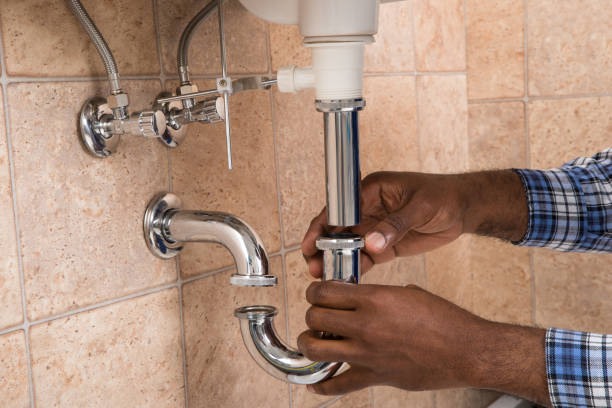On this page on the next paragraphs you can discover lots of very good tips concerning What to Know About Plumbing: Basics, Tips, and Insights.

Plumbing is an important facet of any home, in charge of providing clean water for alcohol consumption, food preparation, and bathing, along with getting rid of wastewater safely. Comprehending the essentials of home plumbing is vital for every single homeowner to make sure correct maintenance, troubleshooting, and, if required, repair work. In this newbie's overview, we'll cover the fundamental ideas of home plumbing to aid you come to be much more accustomed to how it works.
Water Heating Unit
The water heater is in charge of heating water for domestic use, including bathing, cooking, and cleansing. Common types of hot water heater consist of tank-type water heaters, tankless (on-demand) water heaters, and heat pump water heaters. The water heater is linked to the water system system and supplies warm water to plumbing components as needed.
Drainage System
The drainage system eliminates wastewater from your home and lugs it away to a sewer treatment facility or septic tank. It consists of a network of pipes, installations, and fixtures that transfer wastewater from plumbing fixtures to the main sewage system line or septic tank. Correct drainage is vital to protect against obstructions, backups, and sewage leaks.
Air flow System
The air flow system assists maintain correct atmospheric pressure and protect against sewer gases from entering your home. Vent pipes, additionally known as air vent stacks, expand from plumbing fixtures to the roof covering, enabling sewage system gases to get away safely outdoors. Ventilation pipes likewise permit air to enter the drain system, facilitating smooth wastewater circulation and avoiding suction or vacuum cleaner results.
Water System
The supply of water system brings tidy water into your home from a local water source or an exclusive well. It contains a main water line that attaches to your home's plumbing system, typically situated underground. A water meter measures the quantity of water consumed, while a shut-off valve enables you to regulate the circulation of water into your home.
Plumbing Fixtures
Plumbing components are gadgets that deliver water to numerous parts of your home and include sinks, taps, commodes, showers, bathtubs, and appliances such as dish washers and cleaning makers. Each component is attached to the water supply system using pipelines and installations and may have its shut-off shutoff for upkeep or emergency situations.
Common Plumbing Devices
Having the right tools accessible is necessary for carrying out standard plumbing repair work and upkeep tasks. Typical plumbing devices include flexible wrenches, pipe wrenches, pliers, pipeline cutters, hacksaws, bettors, augers (or drain snakes), and Teflon tape. Having these devices readily offered can help you deal with small plumbing issues effectively.
Standard Plumbing Repair Work
While some plumbing repair services may need specialist assistance, numerous usual issues can be attended to with standard DIY methods. Understanding how to repair a dripping faucet, unclog a drain, change a commode flapper, or repair a leaking showerhead can conserve you money and time on plumbing repairs.
Final thought
Recognizing the basics of home plumbing is vital for every single property owner to keep a secure, functional, and effective plumbing system. By acquainting on your own with the water system system, plumbing components, water drainage system, ventilation system, typical plumbing tools, and standard repair work, you can confidently attend to minor plumbing problems and ensure your home's plumbing system operates smoothly.
Understanding Basics of Home Plumbing System: A Beginner's Guide
The Main Components of Your Home Plumbing System
The Water Supply System
This system is responsible for transporting fresh water into your home. It usually has a main water line that splits into two branches: one directed towards cold water services and the other connected to a water heater for hot water. The pressure is key here; it ensures water reaches all parts of your house.
The Drainage System
Once water has been used, it becomes wastewater that needs to be removed from your home. This is where the drainage system comes into play. It includes all the pipes that carry wastewater and sewage away from your house to sewage treatment facilities or septic tanks.
The Vent System
The vent system prevents sewer gases from entering your home and helps maintain the pressure balance that allows wastewater to flow out properly. These vents usually exit through the roof of your house.
Water Heating System
For those who enjoy hot showers or using hot water for cleaning, the water heater is a crucial part of the plumbing system. It can be a tankless system, which heats water on demand, or a traditional water tank model.
Common Plumbing Problems and Basic Troubleshooting
Plumbing systems, while designed to be durable, can face issues like clogged drains, leaky faucets, or low water pressure. Here are some basic troubleshooting tips:
Clogged Drains
Use a plunger or a plumber's snake to try and dislodge whatever is blocking the drain. Regular cleaning can prevent clogs.
Leaky Faucets
Often caused by worn-out washers or gaskets, these can usually be replaced by someone with basic DIY skills.
Low Water Pressure
This might be due to sediment build-up in your fixtures or a leak somewhere in your water line. Cleaning out aerators or seeking a professional to detect leaks might be necessary.
Preventive Maintenance Tips
Maintaining your plumbing system is key to avoiding emergencies. Regularly check for leaks, avoid disposing of grease down the sink, and have your system inspected by a professional plumber at least once a year.

Hopefully you enjoyed our piece about How Does the Plumbing Work in Your Home?. Thanks for taking time to browse our article. Liked our post? Please share it. Let another person locate it. I thank you for your readership.
Book Service